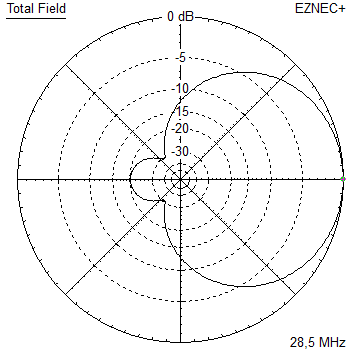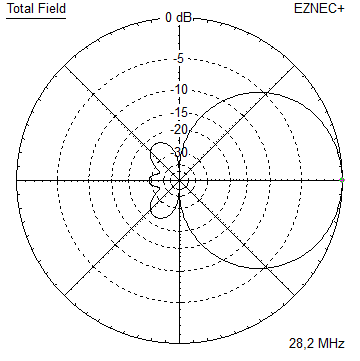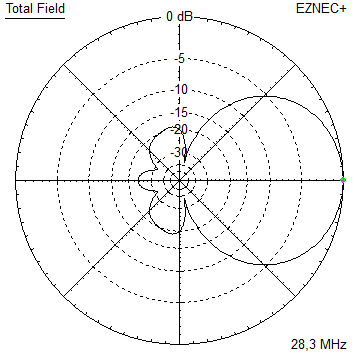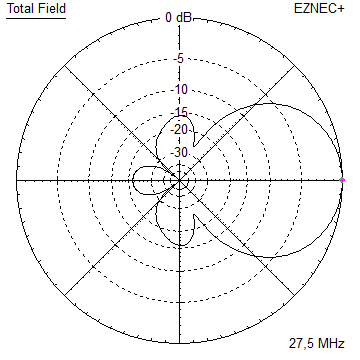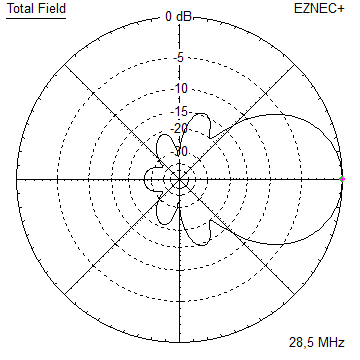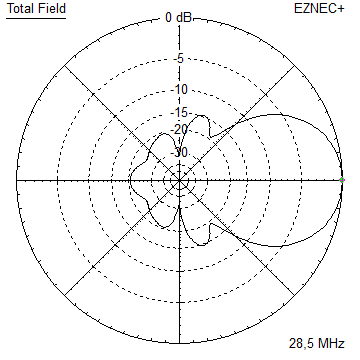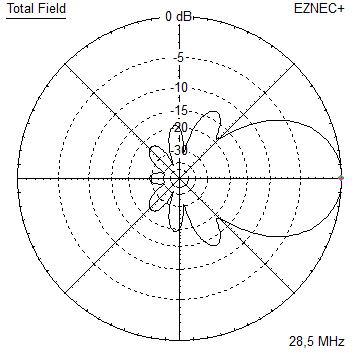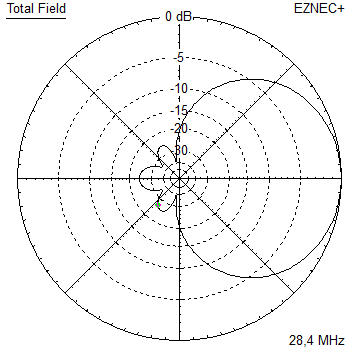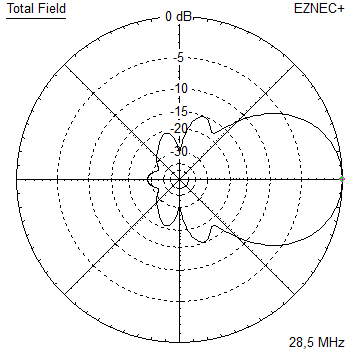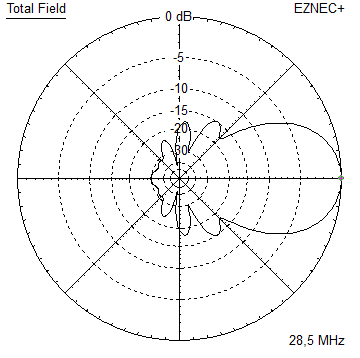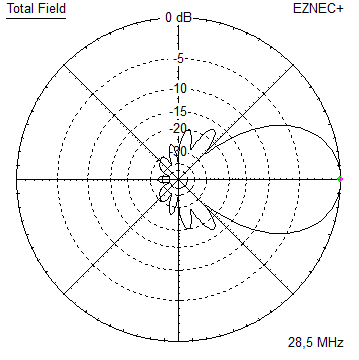
GTV 28-9m LT with bent Dipole
28.2 to 28.6 MHz with VSWR < 1:1.2 (Return Loss better -20 dB)
On 28 MHz we should less look for gain but very clean directivity, because if the band is open successful DX more or less comes down to fade out unwanted signals. If we can easily produce a signal that enables us to ping our own echo when twice (!) around the globe with less than 100 watts of output, we may pass on 0.5 dB gain. And when band is closed that little bit would not help at all.
• Directivity numbers Dipole 1.6 or 2.2 dB YBN 28-6n 12.9 or 11.1 dB GTV 28-7w 17.1 or 12.3 dB GTV 28-9m LT 25.5 or 14.1 dB
The directivity of an antenna is power density in beam direction divided by its average power density. The ideal isotrophic radiatior shows a directivity of 0 dB.
Note: This is not a beginners Yagi. Like on VHF the bent dipole needs trimming regarding bending angle and final length. Thus you should be able to lower this Yagi for a few times on the mast easily for final trimming.
Design date of issue: 2023.04.30
Current distribution


Performance Data (28.5 MHz, 16 mm el.)
Gain vs. isotr. Rad. 14.0 dBi Gain vs. Dipole 11.9 dBD -3 dB E-plane 38.2 deg. -3 dB H-plane 42.8 deg. F/B -35.7 dB F/R -26.1 dB Impedance 50 ohms Mechan. Length 22712 mm + 2 x 50 mm offset Electr. Length 2.16 λ
Geometry
On Request ...
How many pageviews did this design get since Apr. 2023?
Pattern and VSWR Plots
Elevation and Azimuth plot at 28.5 MHz


SWR and Return Loss plots - simulated with 4nec2

Radiation pattern with Ground Gain (28.5 MHz)
• At 16 m above perfect ground

Gain vs. isotr. Rad. 19.5 dBi at 9 deg. Gain vs. Dipole 17.4 dBD F/B -35.5 dB at 172 deg.
• At 20 m above perfect ground

Gain vs. isotr. Rad. 19.7 dBi at 7 deg. Gain vs. Dipole 17.6 dBD F/B -37.0 dB at 173 deg.
Stacking: none so far
73, Hartmut, DG7YBN
